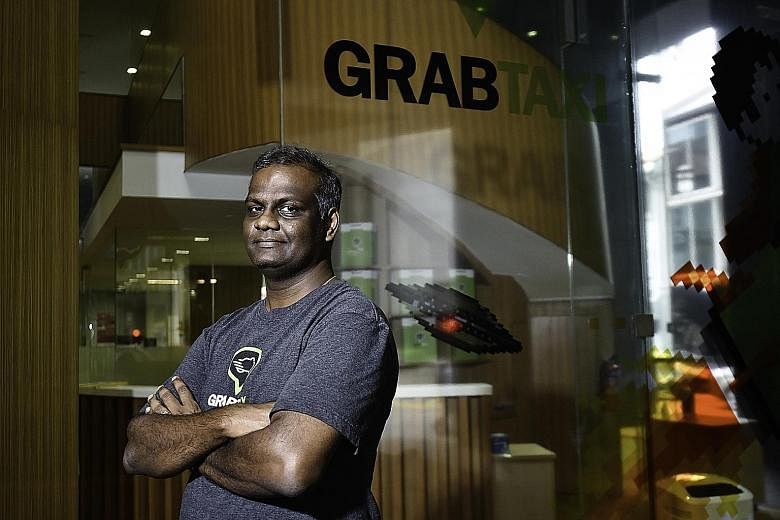Commuters used to the speedy services of GrabTaxi's ride-booking app have data analytics tools to thank for enabling their new-found convenience.
GrabTaxi, which broke into the Singapore market in October 2013, handles up to 1.5 million bookings daily across 28 South-east Asian cities including Singapore, Kuala Lumpur and Manila.
"The new capabilities offered by real-time data analytics tools are part of a suite of solutions that we use to run the business," said GrabTaxi's vice-president of engineering, Mr Arul Kumaravel. The firm recently implemented a real-time data analytics system to better match commuter demand with driver supply. Its technology is supplied by United States-based Amazon Web Service.
Using a technique called geohash, the system divides Singapore into grids of 1,200 x 600m. For each grid, the system analyses the ratio of commuters to drivers, and displays in real time whether demand is outstripping supply in the form of a heatmap.
Red indicates a shortage of drivers while green means there are enough drivers.
When red spots show up on the grid, notifications are automatically sent to drivers' mobile phones via the GrabTaxi app to alert them to head to the hot spots.
When drivers are in severe shortage, especially during a heavy downpour, GrabTaxi will even send SMS messages to part-time car drivers to activate them.
"It's a slow journey changing the behaviour of drivers. Not every driver will respond when we ask them to go to the hot spots," said Mr Kumaravel. "But if they get a job immediately, they will be more responsive in the future," said the 42-year-old, who leads 100 developers and engineers at GrabTaxi's research and development centre in Cecil Street.
Since it started using this data analytics system four months ago, GrabTaxi has improved the number of successful passenger-driver matches by 30 per cent.
Passengers' search terms and their pickup and drop-off locations are also remembered by the app, saving passengers the hassle of entering an address. GrabTaxi said that 80 per cent of the pickups are from the same locations.
Data analytics also led to the company's new carpooling service, dubbed GrabHitch, announced last month. The service is currently in beta testing but will be rolled out next month.
GrabTaxi's data shows that over 20,000 cars enter the Central Business District each morning, with most of them carrying only one passenger. Said Mr Kumaravel: "Instead of having four different rides, can we combine them into one?"
GrabTaxi will also launch a new Go Home feature on its app to allow drivers to find passengers who are heading in the direction of the drivers' homes. "This will benefit our driver community, allowing them to take a last booking as they complete their shift," he said.


